
 |
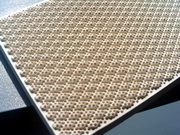 |
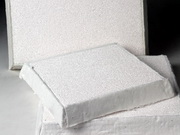 |
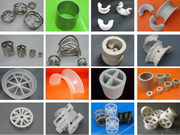 |
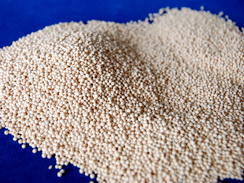
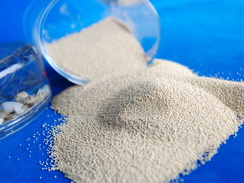

Introduction of JINTAI Molecular Sieves:
JINTAI Molecular sieves are crystalline metal alumina silicates having a three dimensional interconnecting network of silica and alumina tetrahedra. Natural water of hydration is removed from this network by heating to produce uniform cavities which selectively adsorb molecules of a specific size.
4 to 8-mesh sieve is normally used in gas phase applications, while the 8 to 12-mesh type is common in liquid phase applications. The powder forms of the 3A, 4A, 5A and 13X sieves are suitable for specialized applications.
Long known for their drying capacity (even to 90°C), molecular sieves have recently demonstrated utility in synthetic organic procedures, frequently allowing isolation of desired products from condensation reactions that are governed by generally unfavorable equilibria. These synthetic zeolites have been shown to remove water, alcohols (including methanol and ethanol), and HCl from such systems as ketimine and enamine syntheses, ester condensations, and the conversion of unsaturated aldehydes to polyenals.
|
Type |
JINTAI 3A molecular sieve (Product No: JT-MS-3A) |
|
Composition |
0.6 K2O: 0.40 Na2O : 1 Al2O3 : 2.0 ± 0.1SiO2 : x
H2O |
|
Description |
The 3A form is made by substituting
potassium cations for the inherent sodium ions of the 4A
structure, reducing the effective pore size to ~3Å, excluding
diameter >3Å, e.g., ethane. |
|
Major Applications |
Commercial dehydration of unsaturated hydrocarbon
streams, including cracked gas, propylene, butadiene, acetylene;
drying polar liquids such as methanol and ethanol. Adsorption of
molecules such as NH3 and H2O from a N2/H2 flow. Considered a
general-purpose drying agent in polar and nonpolar media.3
Angstrom, is obtained when part of the sodium ions of the 4
Angstrom sieve are replaced by potassium ions. |
|
Type |
JINTAI 4A molecular sieve (Product No: JT-MS-4A) |
|
Composition |
1 Na2O: 1 Al2O3: 2.0 ± 0.1 SiO2 : x H2O |
|
Description |
This sodium form represents the type A
family of molecular sieves. Effective pore opening is 4Å, thus
excluding molecules of effective diameter >4Å, e.g., propane. |
|
Major Applications |
Preferred for static dehydration in closed liquid
or gas systems, e.g., in packaging of drugs, electric components
and perishable chemicals; water scavenging in printing and
plastics systems and drying saturated hydrocarbon
streams.Adsorbed species include SO2, CO2, H2S, C2H4, C2H6, and
C3H6. Generally considered a universal drying agent in polar and
nonpolar media.4 Angstrom, is obtained through synthesis of type
A zeolite in sodic form. Will adsorb, in sequence of adsorption
rate, argon, krypton, xenon, ammonia, carbon monoxide, C2H4,
C2H2, CH3OH, C2H5OH, CH3CN2, CS2, CH3CL, CH3Br, and carbon
dioxide. |
|
Type |
JINTAI 5A molecular sieve (Product No: JT-MS-5A) |
|
Composition |
0.80 CaO : 0.20 Na2O : 1 Al2O3: 2.0 ± 0.1 SiO2: x
H2O |
|
Description |
Divalent calcium ions in place of
sodium cations give apertures of ~5Å which exclude molecules of
effective diameter >5Å, e.g., all 4-carbon rings, and iso-compounds. |
|
Major Applications |
Separation of normal paraffins frombranched-chain
and cyclic hydrocarbons; removal of H2S, CO2 and mercaptans from
natural gas. Molecules adsorbed include nC4H10, nC4H9OH, C3H8 to
C22H46, and dichlorodifluoro-methane.5 Angstrom, is obtained
through synthesis of type A zeolite in sodic form. Will adsorb,
in sequence of adsorption rate, C3-C14, C2H5CL, C2H5Br, CH3L,
C2H5NH2, CH2CL2CH2Br2, CHF2CL, CHF3, CF4, (CH3)NH2, B2H6CF2CL2,
CHFCL2, and CF3CL. |
|
Type |
JINTAI 13X molecular sieve (Product No: JT-MS-13X) |
|
Composition |
1 Na2O: 1 Al2O3 : 2.8 ± 0.2 SiO2 : xH2O |
|
Description |
The sodium form represents the
basicstructure of the type X family, with an effective pore
opening in the 910¼ range. Will not adsorb(C4F9)3N, for example. |
|
Major Applications |
Commercial gas drying, air plantfeed purification
(simultaneous H2O and CO2 removal) and liquid
hydrocarbon/natural gas sweetening (H2S and mercaptan
removal).13 Angstrom, is obtained through synthesis of type X
zeolite. Will adsorb, in sequence of adsorption rate, SF6,
CHCL3, CHBr3, CHI3, N-C3F8, CCL4, N-C4F10, N-C7H16, CBr4, C6H6,
B5H10, (CH3)3N, C(CH4)4, (C2H5)3N, C(CH3)C3CL, C(CH3)3Br, and
C(CH3)3CH. |
JINTAI Molecular Sieves Regeneration (activation)
Regeneration in typical cyclic systems constitutes removal of the adsorbate from the molecular sieve bed by heating and purging with a carrier gas. Sufficient heat must be applied to raise the temperature of the adsorbate, the adsorbent and the vessel to vaporize the liquid and offset the heat of wetting the molecular-sieve surface. The bed temperature is critical in regeneration. Bed temperatures in the 175-260° range are usually employed for type 3A. This lower range minimizes polymerization of olefins on the molecular sieve surfaces when such materials are present in the gas. Slow heat up is recommended since most olefinic materials will be removed at minimum temperatures; 4A, 5A and 13X sieves require temperatures in the 200-315 °C range.
After regeneration, a cooling period is necessary to reduce the molecular sieve temperature to within 15° of the temperature of the stream to be processed. This is most conveniently done by using the same gas stream as for heating, but with no heat input. For optimum regeneration, gas flow should be countercurrent to adsorption during the heat up cycle, and concurrent (relative to the process stream) during cooling. Alternatively, small quantities of molecular sieves may be dried in the absence of a purge gas by oven heating followed by slow cooling in a closed system, such as a desiccator.
Some common molecules and their critical diameters:
|
Molecule |
Critical |
Molecule |
Critical diam.(Å) |
|
Helium |
2.0 |
Propylene |
5.0 |
|
Hydrogen |
2.4 |
Ethyl mercaptan |
5.1 |
|
Acetylene |
2.4 |
1-Butene |
5.1 |
|
Oxygen |
2.8 |
trans-2-Butene |
5.1 |
|
Carbon monoxide |
2.8 |
1,3-Butadiene |
5.2 |
|
Carbon dioxide |
2.8 |
Chlorodi fluoromethane |
5.3 |
|
Nitrogen |
3.0 |
Thiophene |
5.3 |
|
Water |
3.2 |
Isobutane to isodocosane |
5.6 |
|
Ammonia |
3.6 |
Cyclohexane |
6.1 |
|
Hydrogen sulfide |
3.6 |
Benzene |
6.7 |
|
Argon |
3.8 |
Toluene |
6.7 |
|
Methane |
4.0 |
p-Xylene |
6.7 |
|
Ethylene |
4.2 |
Carbon tetrachloride |
6.9 |
|
Ethylene oxide |
4.2 |
Chloroform |
6.9 |
|
Ethane |
4.4 |
Neopentane |
6.9 |
|
Methanol |
4.4 |
m-Xylene |
7.1 |
|
Methyl mercaptan |
4.5 |
o-Xylene |
7.4 |
|
Propane |
4.9 |
Triethylamine |
8.4 |
|
n-Butane to n-docosane |
4.9 |
-Ceramic Foam Filter-
Alumina Ceramic Foam Filter
SiC Ceramic Foam Filter
Zirconia Ceramic Foam Filter
-Tower Packing-
Ceramic Random Packing
Metal Random Packing
Plastic Random Packing
Structured Packing
-Ceramic Honeycombs-
Infrared Ceramic Tile
Ceramic Honeycomb Substrate
RTO Honeycomb Ceramic
Diesel Particulate Filter
Honeycomb Foundry Filter
-Others-
Chromium Metal
Alloying Tablets
Titanium Sponge
Molecular Sieves
Acid Resistant Ceramic
Inert Alumina Ceramic Balls
-Product Navigation-
Product Photo Gallery
Product Application
Copy Right © 2005 Jiangxi Jintai Special Material LLC. All Rights Reserved
E-Mail: biz@jintai-group.cn Web: www.ceramic-honeycombs.com
Address: Room1008, Heng Long International Building, No.93 Yue Jin South Road, PingXiang, JiangXi 337000, China